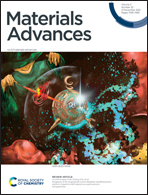A novel brain–computer interface flexible electrode material with magnetorheological properties
Abstract
The electrode is the crucial component of a brain–computer interface (BCI), and is the key for the development of the BCI technology. Compared with non-intrusive electrodes and intrusive electrodes, semi-invasive BCI electrodes could make a balance between the quality of the electroencephalogram (EEG) signal and security. However, the application of the compressed mesh electrodes, typical semi-invasive electrodes, has been restricted due to the folds and tangles of the electrode material during injection and the insufficient deployment after injection. To solve the problem, we develop a novel semi-invasive BCI flexible electrode material based on the Fe3O4@GO/P(NIPAM–MAA) hydrogel with magnetic field controlled rheology. The rheology test results indicate that the hydrogel is injectable and its expansion during the transition from sol to gel at ∼37 °C can be actively controlled by applying a magnetic field. Its resistivity is less than 120 Ω m, which makes it sensitive enough to transmit electrical signals between brains and computers. The signal waveform and amplitude recorded by the Fe3O4@GO/P(NIPAM–MAA) hydrogel electrode and wet electrode are basically the same, which proves that the prepared hydrogel electrode material can acquire and record effective EEG signals. Compared with the wet electrode, hydrogel electrodes show higher average peak-to-peak values and higher noise levels. Although the signal-to-noise ratio is similar between the Fe3O4@GO/P(NIPAM–MAA) hydrogel electrode and the wet electrode, the hydrogel electrode is more stable, which proves that the Fe3O4@GO/P(NIPAM–MAA) hydrogel electrode can accurately collect and record EEG signals with a stable signal-to-noise ratio.



 Please wait while we load your content...
Please wait while we load your content...